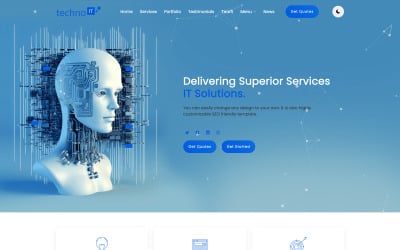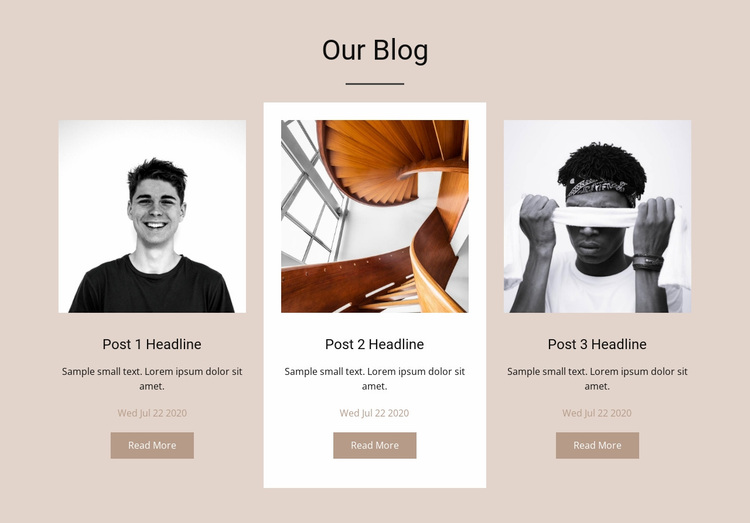Affordable Website Design Services for Large Businesses
Leading Tips for Creating an Impactful Site Style That Transforms
In today's digital landscape, the relevance of an impactful internet site layout can not be overstated, particularly when it involves transforming site visitors into consumers. To attain this, one should think about a range of variables, consisting of understanding the target audience, focusing on individual experience, and maximizing for mobile systems. The tactical use of compelling call-to-actions and a well-defined visual hierarchy plays an essential role in guiding users through their trip. As we explore these crucial components, it comes to be noticeable that the success of your website depends upon even more than simply visual appeal; it calls for a thoughtful strategy to style and performance.

Understand Your Target Target Market
Recognizing your target audience is fundamental to reliable web site style, as it lays the groundwork for creating an interesting individual experience. Identifying that your users are, including their demographics, preferences, and actions, allows designers to tailor the web site's material, layout, and performance to meet certain needs.
Carrying out extensive marketing research is essential in this procedure. Surveys, meetings, and analytics can provide useful understandings into customer expectations and pain factors. By assembling this data, developers can create individual personalities that stand for various segments of the target market, making certain that style choices are informed and pertinent.
Furthermore, comprehending the target market helps in picking ideal style components such as color pattern, typography, and images that reverberate with customers. A site that speaks directly to its target market cultivates a feeling of link and count on, motivating longer visits and higher conversion rates.
Inevitably, a user-centered approach to site style not just boosts customer complete satisfaction however additionally sustains company goals by driving involvement and loyalty. By prioritizing the requirements and choices of the target market, a website can efficiently offer its purpose and achieve wanted end results.
Prioritize Customer Experience
To enhance the overall effectiveness of a site, prioritizing user experience (UX) is important (Website Design). A well-designed UX guarantees that visitors can navigate the website easily, locate details promptly, and involve with material meaningfully. This leads to increased user fulfillment and higher conversion rates
Begin by executing intuitive navigation. Menus should be rationally structured, allowing users to situate vital areas of the site with marginal initiative. Consistency in design components, such as color design and fonts, cultivates experience, which is vital for preserving user involvement.
In addition, think about the packing rate of your web site. A delay of simply a few secs can cause significant drop-offs, as users are much less likely to await a slow-loading page. Simplifying pictures and optimizing code my review here can boost performance and maintain visitors.
By prioritizing user experience, you not only produce a much more delightful setting for visitors but also enhance your brand name's reputation. Inevitably, a focus on UX is read the article an investment in the long-term success of your site.
Enhance for Mobile Tools
Enhancing for mobile tools is critical in today's electronic landscape, where a raising number of users access web sites via smart devices and tablet computers. A mobile-friendly layout not just enhances user experience but additionally plays a considerable role in enhancing search engine positions. To attain this, it is vital to adopt a receptive layout that immediately adapts to different screen dimensions and positionings.

Loading speed is an additional essential aspect; mobile users are commonly less client and anticipate rapid access to info. By focusing on mobile optimization, you ensure that your web site continues to be competitive and properly involves a broader audience.
Usage Engaging Call-to-Actions
A website's effectiveness commonly pivots on its ability to assist visitors toward desired actions, making engaging call-to-actions (CTAs) necessary parts of design. CTAs function as the essential factors that guide users to involve with the site, whether that implies purchasing, signing up for a newsletter, or downloading and install a resource.
To develop effective CTAs, clearness is vital. Usage concise language that clearly communicates the action you desire the customer to take. Expressions such as "Get going," "Join Free," or "Shop Now" not only convey urgency but also remove obscurity. The placement of CTAs is equally important; they Continue should be strategically positioned throughout the webpage to guarantee they are conveniently noticeable, particularly in high-traffic areas.
Furthermore, the style of CTAs must attract attention without being interfering. Use contrasting colors and clear fonts to guarantee they record focus. Furthermore, consider using directional signs, such as arrowheads or pictures, to guide customers toward these switches. By concentrating on these elements, companies can dramatically improve user involvement, driving conversions and eventually achieving their web site's goals.
Emphasis on Visual Pecking Order
Effective web site design depends greatly on a well-structured visual power structure that guides individuals through material flawlessly. By organizing aspects in a manner that prioritizes details, designers can improve individual experience and help with decision-making. This entails utilizing size, shade, contrast, and spacing tactically to accentuate the most critical elements of a website.
Using bigger fonts for headings and subheadings develops a clear difference in between different sections, enabling customers to scan content effortlessly. In addition, utilizing contrasting shades for switches and calls-to-action can record customer attention and encourage interaction. Whitespace is one more crucial component; it avoids clutter and allows individuals to concentrate on vital messages without distractions.
Images and graphics ought to match the text while additionally sticking to the well-known power structure, enhancing the total message (Website Design). Uniformity in layout components, such as color schemes and typography, further reinforces the aesthetic power structure, making navigating instinctive

Final Thought
In verdict, efficient internet site layout requires a comprehensive understanding of the target audience, prioritization of customer experience, and mobile optimization. Eventually, a well-executed website style serves as an important component in driving customer actions and achieving organization goals.